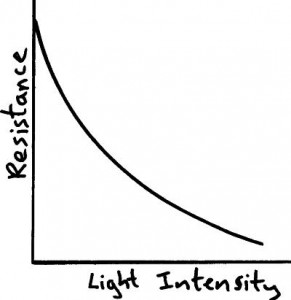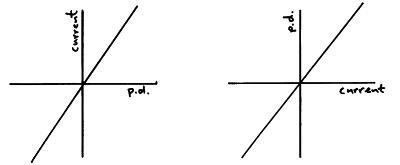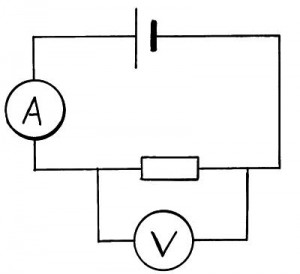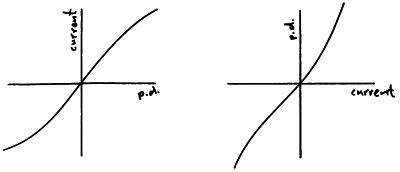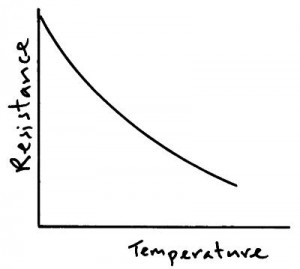A resistor at constant temperature (ohmic conductor) 
Current is directly proportional to potential difference. Doubling the potential difference doubles the current in the circuit. The resistance remains the same. Plotting a graph of potential difference against current gives a straight line passing through the origin (0,0).
Ohm’s Law
“The electrical current in a conductor is proportional to the potential difference applied to it provided the temperature remains the same.”
V = IR
Potential difference = current x resistance
(V, volts V) (I, amps A) (R, ohms W)
Measuring current and potential difference
Current is measure with an ammeter, ammeters are always connected in series with the component of interest.
Potential differences are measured using a voltmeter, voltmeters are connected in parallel with the component of interest.
By measuring the current and potential difference you can calculate the resistance.
A Filament Lamp 
Here the graph curves because as the filament heats it’s resistance goes up (the resistance of the filament is changing).
A diode 
A diode only allows current to flow in one direction through it (forward biased), when the current tries to flow the other way (reverse biased) no current is allowed to flow through the diode.
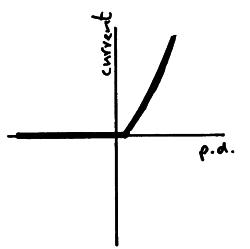
When the diode is reversed biased if we keep increasing the potential difference the diode will eventually begin to conduct in the reverse direction, this is called the break down voltage.
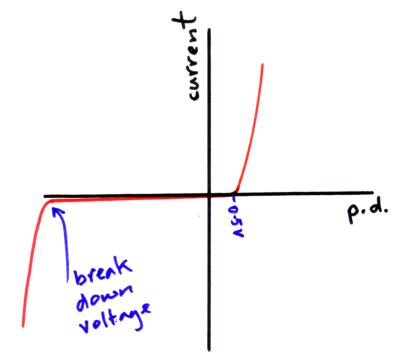
Thermistor 
The resistance of a thermistor decreases as it’s temperature increases.
Thermistors can be used as thermostats, the thermistor is used in circuits which monitor and control the temperature of rooms, freezers & fridges etc.
Thermistors can have a positive or a negative temperature coefficient. A negative temperature coefficient means that its resistance decreases with an increase in temperature, this is caused by the release of extra charge carriers in the thermistor.
LDR – Light Dependant Resistor 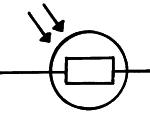
The resistance of an LDR decreases as the light intensity falling on it increases.
LDR’s are used in circuits which automatically switch on lights when it gets dark, for example street lighting.
